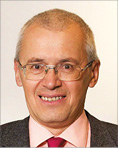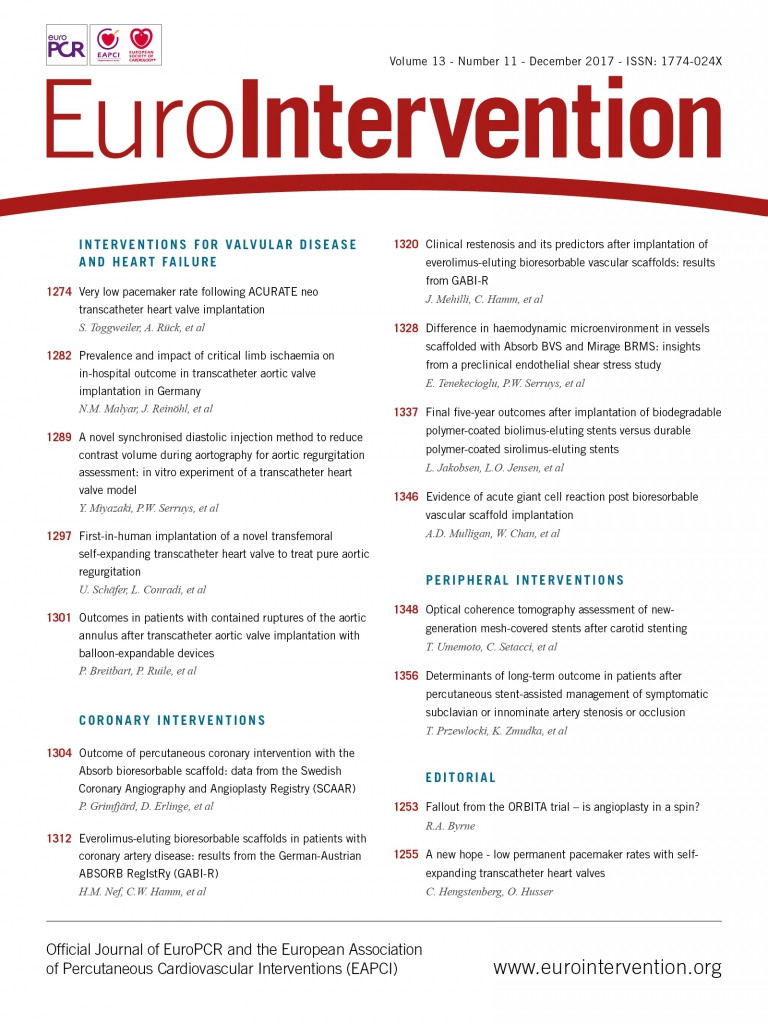
Introduction
During the period from 1991 to 1993 I was working in the Netherlands where I underwent research training (Erasmus University Rotterdam) and interventional cardiology training (Thoraxcenter Zwolle). That was the fascinating period when thrombolytic treatment of acute myocardial infarction became the standard of care and the first small randomised trials demonstrated that primary percutaneous coronary intervention (p-PCI) is superior to thrombolysis in the treatment of patients presenting with acute ST-segment elevation myocardial infarction (STEMI)1-3. It took nine more years before the first national (Czech) guidelines recommended primary angioplasty (over thrombolysis) as the preferred treatment for all patients with acute STEMI4. This was followed one year later by the European guidelines5 and two years later by the American guidelines6. It took another seven years for primary angioplasty in Europe to become widely available for nearly all patients with acute STEMI7,8. Thus, the delay between the first randomised evidence for p-PCI and implementation in real-world practice was nearly 20 years… Fortunately, today this is just history, as approximately 80% of European patients (and even close to 100% of those living in large urban areas) now have access to p-PCI. Primary PCI networks exist in all European countries irrespective of the economic strength of the country (interestingly, in rich countries such as the UK and France, p-PCI was widely implemented later than in many Eastern European countries). Thus, cardiologists are now experienced in treating emergency patients including those after cardiopulmonary resuscitation, in cardiogenic shock or pulmonary oedema. This is why cardiologists are so interested in offerng their skills, time and effort for the benefit of other patients presenting with life-threatening diseases, e.g., acute ischaemic stroke.
In 2015, a similar revolution in the treatment of acute ischaemic stroke (AIS) occurred: mechanical thrombectomy (catheter-based intervention) was clearly shown to be superior to thrombolysis alone in five randomised trials9-13 published that year. There is one important difference: the neuro community (neurologists, neuroradiologists, neurosurgeons) developed new guidelines very rapidly, so that the nine- to eleven-year delay in the development of guidelines for cardiologists described above was shortened to just one year for acute stroke guidelines14-17. This offers a better prospect for patients with acute ischaemic stroke. But is it realistic? Can we really expect that all suitable (i.e., early presenters with larger AIS) European patients (irrespective of their location) will have access to catheter-based therapy in the near future? There are many obstacles and limitations which may hamper the availability of acute stroke mechanical thrombectomy for the European population, especially in some countries.
THE NATURE OF AIS
Longer patient-related delays (stroke is not painful and many patients are not able to call for help themselves due to acute speech disability) combined with a shorter time window for effective treatment result in a significantly lower proportion of patients indicated for thrombectomy within the optimal time window (ideally <4.5 hours; only in properly selected patients may a longer delay be acceptable).
THE COMPLEXITY OF STROKE CARE
While for STEMI patients a single specialist (cardiologist) must be immediately available 24/7/365, the multidisciplinaty nature of acute stroke care requires numerous specialists to be available even more quickly: neurologist, imaging radiologist, endovascular interventionalist, intensivist or anaesthesiologist, sometimes also a neurosurgeon or cardiologist, etc.
THE LACK OF TRAINED NEUROINTERVENTIONALISTS
There is a lack of trained neurointerventionalists in most countries. There are just a few countries in Europe (a maximum of five) with a sufficient number of endovascular interventionalists to cover the needs of the population for acute stroke care. Even in these best practice countries, the immediate need is to increase the numbers of procedures three to fourfold compared to 2016. In many countries (with acute stroke intervention rates well below 10/million/year) the required increase in acute stroke interventions should be far greater to meet the needs of the population. Because of limited human resources and the duration of training, it may take many years before acute stroke interventions will become available to all European patients to the same extent as primary angioplasty is available for STEMI patients.
THE TURF BATTLES
Turf battles exist between many of the different medical specialisations. We see some interventionalists trying to protect their “field of interest” from the influx of “foreigners” (physicians of other specialties), partly with good intent, i.e., to protect patients from complications caused by inexperienced beginners. The result of this protective attitude will be that outcomes may be excellent - but only for a few patients. Acute stroke care is now facing a huge dilemma: A) fast and wide implementation of mechanical thrombectomy for many patients at the price of less excellent results, versus B) slow and selective care for fewer patients with better results in those lucky enough to receive such care.
In recognition of the increasing importance of stroke for cardiac patients, in 2016 the European Society of Cardiology (ESC) founded a new interdisciplinary constituent body – the ESC Council on Stroke18. The leadership of this council (https://www.escardio.org/Councils/Council-on-Stroke/esc-council-on-stroke) is truly interdisciplinary: three cardiologists, one stroke neurologist, one interventional neuroradiologist, one vascular surgeon. From the very beginning, the council sought cooperation with other societies interested in stroke. While there has been a positive response from neurosurgeons and vascular surgeons, the response from stroke neurologists (namely the European Stroke Organisation) and from the neuroradiologists (the European Society for Minimally Invasive Neurological Therapy) has been rather cold. The requirement for two years’ full-time training in a neuroradiology department for those interventional cardiologists who wish to treat acute stroke patients is not realistic. No mature interventional cardiologist can leave his/her cathlab for two years. The ESC Council on Stroke is seeking a more open interdisciplinary discussion on this topic. We believe that, for example, experienced interventional cardiologists (with greater than five years of interventional practice), who are also carotid operators (regularly performing carotid stenting procedures), can easily learn to perform acute stroke interventions after a much shorter period (e.g., three months) of neuroradiology training. From the patient’s perspective, this is the only way to offer this effective treatment for acute stroke to the broad European population. I do hope that representatives of the respective medical specialties will place patient interests first and foremost and forget about the unnecessary turf battles.
Conflict of interest statement
The author has no conflicts of interest to declare.

